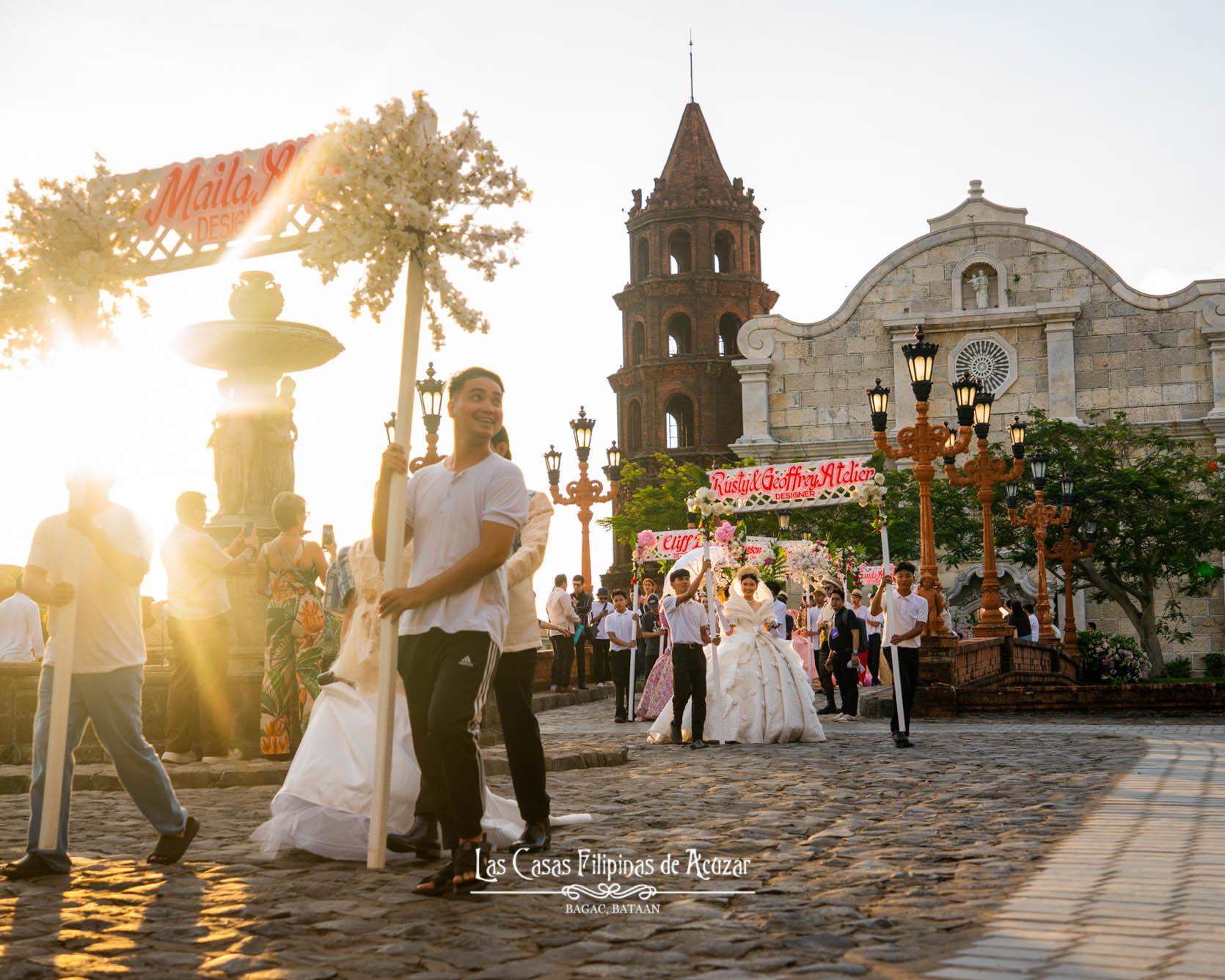During one of my pre-teenage days, I witnessed a procession of Santacruzan back in our quiet hometown in Pangasinan, and at that very moment, I fancied being the Reyna Elena since I like dressing up and fixing myself with a new found beauty secret: makeup. After all, all I saw about the occasion was just the surface—the Flores de Mayo’s pomp and pageantry.
Some people, which I honestly confess I belonged to before, would just have associated the wholesome Catholic tradition to a showcase of beautiful ladies dressed in the most glamourous gowns with intricate designs, to the point of Filipinos being warned by heads of the Catholic Church to focus not on the glitz and glamour to ensure the solemnity of the occasion.
More than a religious rite, Flores de Mayo has been deeply ingrained in the Filipino culture. As the month of May approaches, Filipinos, even those outside the country welcome the celebration, marking it with the flowers decked in the caroza of Virgin Mary, prayers and the much-anticipated sagalas, or the ladies dressed up in extravagance for a religious parade.
Filipinos love fiesta,and speaking of fiesta celebrations, Flores de Mayo—a Spanish term which literally means “Flowers of May”, is considered the Queen of Filipino Festivals.
Introduced in the Philippines by the Spaniards in the 1800s, Filipinos celebrate Flores De Mayo in honor of the Blessed Mary. It is believed that the first religious parade was held in Malolos, Bulacan to honor Queen Helena of Constantinople and her son, Constantine the Great finding the True Cross, which said to be where Jesus was crucified
As the celebration is deeply ingrained in the heart of every Catholic Filipino, Filipino communities and associations outside the Philippines also get to celebrate the occasion with the same gallantry as it is in their hometown. In Europe, there is a Euro-Santacruzan hosted by the Filipino Community in Belgium, while in the New Orleans, Filipino-Americans celebrate the religious ritual organized by the Franzuela Family.
The parade is centered into the three virtue namely hope, charity ,and faith. The reynas (queens) represent historical figures. The parade itself features a lot of reynas, but the more prominent ones, however, are listed below:
Reyna Fe – represents the virtue of faith. Carrier of the cross.
Reyna Esperanza – symbolizes hope. Carrier of the anchor.
Reyna Caridad – represents charity. Carrier of a red heart.
Divina Pastora – has a shepherd’s staff.
Rosa Mistica – carrier of a bouquet of roses.
Reyna de las Flores – the Queen of Flowers. Carrier of a big bouquet of flowers.
Reyna Emperatriz – a representation of Queen Helena’s title Augusta (Empress or Queen Mother)
Reyna Elena – A personification of St. Elena and the most prestigious role usually awarded to the most beautiful lady participating in the procession. Some communities keep her identity as a secret until the day of the parade. In other communities, they have as many as three. She is also accompanied by a small boy dressed as Constantine.
While the reynas are considered the main attraction of the parade, below are some of the most common representations that play an equally vital role in the parade:
Methuselah – bearded old man bent with age. He rides a cart while toasting grains of sand in a pan over fire. This symbolizes that we will always go back to dust, just like what he is toasting
Samaritana – a woman whom Christ spoke to a well. She represents an outcast who was reformed after meeting Christ, and reminds us that salvation is for all and not just for the faithful. She carries a water jug on her shoulder.
Aeta – anyone dressed as a member of a tribal or regional ethnic group. It symbolizes those groups who have come to accept Christianity.
Veronica – the woman who wiped the face of Jesus. She carries a veil with three imprints of face the Jesus
Tres Marias
Mary of Magdala – holder of a bottle of perfume
Mary, Mother of Christ – holder of the handkerchief
Mary, mother of James – holder of a bottle of oil.
Ave Maria – Dressed to appear as angels, eight girls all wearing long white dresses with wings attached represent Ave Maria. Each girl holds a letter to complete the word that spells “AVE MARIA.”
Devotees walk during the procession holding lighted candles while praying the rosary , novena and singing a prayer, “Dios Te Salve” accompanied by the music of rondalla, an ensemble of plectrum instruments, which is one of the influence of the Spanish in the Philippine folk music.
Flores de Mayo has come a long way since it was introduced to us by the Spanish in the 1800s. To this day, Catholic church leaders are always reminding people of the spiritual significance of Flores de Mayo. With the pageantry that comes along with it, it’s easy for others who are not aware of its deeper spiritual significance to regard it merely as a form of entertainment. Indeed, it’s goes beyond physical appearance that is pomp and pageantry as manifested in flowers of May, sagala fashion, and the reyna’s beauty. The beauty that it wants to inculcate is the beauty that emanates from the heart—the beauty of being a blessing to others, and the beauty of having a compassionate heart that encourages love for one another.






